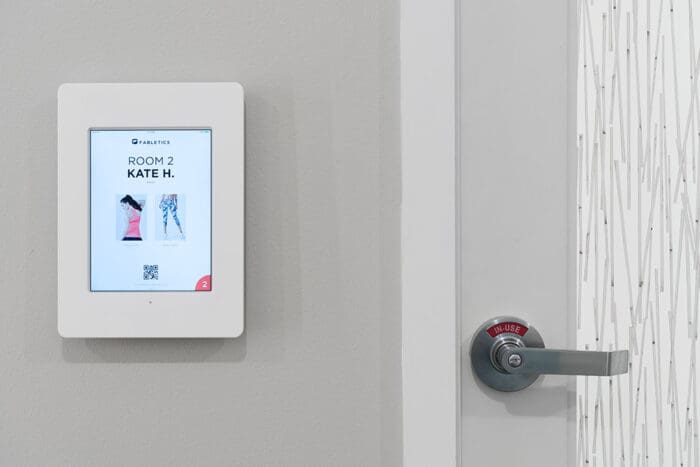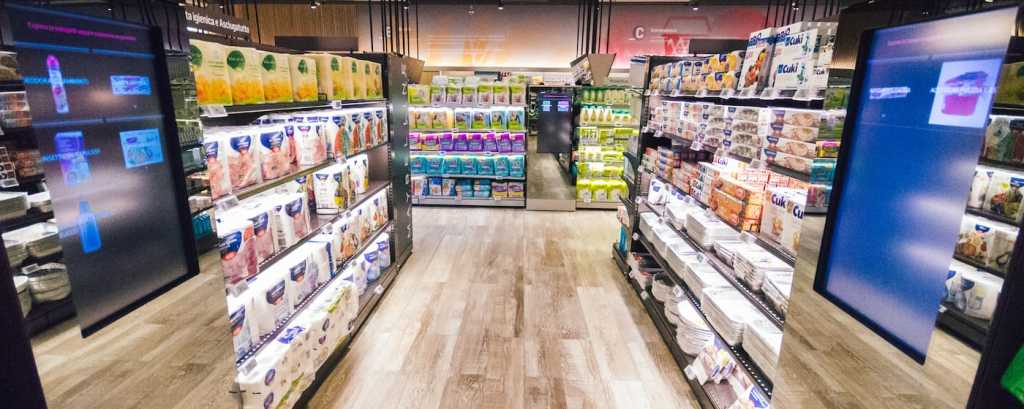Table of Contents
** Minutes
7 retail experience ideas to try this year
The best retail experience examples from 2022
The benefits of a stellar retail experience
How people feel when they interact with your business influences their buying behavior.
A Salesforce report found that almost 90% of shoppers consider the customer experience as important as the company’s products or services.
The type of retail experience speaks volumes about the quality of your products and how much you value your customers.
So, how exactly do you create an exceptional retail experience?
This article discusses what it takes to create a great retail experience for your customers, plus some unique examples from renowned brands.
What is a retail experience?
A retail experience refers to how customers interact with your brand and how it makes them feel, which influences their decision to buy or not to buy.
The retail experience involves multiple touch points throughout the buying journey, from the brand discovery stage (e.g., an ad on Instagram) to delivery.
What does a great retail experience look like?
In general, a great retail experience is when a customer has a positive interaction with your brand that makes them feel confident to purchase from you — and hopefully again and again.
The first interaction and the first purchase are the two most important events that can influence a customer’s experience and their loyalty to a brand. But keep in mind that other factors can influence customers based on their values.
For example, according to a SurveyMonkey report, Gen Z customers desire brand authenticity, transparency, and sustainability more so than older consumers.
But no matter who your audience is, in an era when consumers are bombarded with ads online and offline, it’s important to create a multichannel retail strategy to get in front of customers through their preferred channel.
Here’s a general scenario:
When a customer discovers your brand, they’re going to spend time on your website. A user-friendly and aesthetically-pleasing online store is important. This includes:
- A detailed shipping policy, including returns
- Eye-catching product photos and important information
- An easy-to-search product catalog
It’s not just about attracting the customer either — a strong ecommerce supply chain is key. That means optimizing inventory levels to meet demand and offering competitive shipping options.
Once a customer is ready to make a purchase, the checkout process should be seamless, so your customers can quickly complete their purchases. This would involve streamlining the checkout process to make it as easy and quick as possible.
Customers also like to keep tabs on their orders. Setting clear expectations about delivery dates and providing real-time order tracking is also a big part of the entire experience.
And don’t forget ecommerce customer service. Many online brands have different options for customers to contact support, including email, phone, and chatbots to answer common questions, including shipping, product availability, and exchanges.
Modern vs. traditional retail experiences
Traditionally, retail experiences almost exclusively involved physical stores, but that has since changed with the growth of online shopping.
This type of experience used to be much more siloed, meaning that customers couldn’t enjoy a unified experience if they switched from one channel to the other.
For example, if someone placed an order online, they wouldn’t have the option to return or exchange the item through the retailer’s physical outlet.
Similarly, when the last unit has been sold out at the physical store, the information wouldn’t immediately be updated on the retailer’s website.
Sometimes, customer information would often be disconnected between various channels and customer order information wasn’t always centralized, causing frustration in the process.
Modern retail experiences have since evolved in the past few years with technological advancements that make omnichannel order managment more efficient and transparent. Now, it’s much easier to expand into new channels while centralizing order and inventory management.
More recently, retailers have turned to experiential retail and pop-up events, to make physical stores more appealing to shop at.
This is partly due from the desire to shop in-store again after the pandemic. Though online shopping continues to rise, in-store shopping was up 22% in 2022 compared to 2021.
Modern retail experiences have transformed to be even more customer-focused, thanks to advancements in technology solutions that can help online brands of all sizes expand to various sales channels and deliver a consistent experience.
7 retail experience ideas to try this year
If you’re looking for ways to enhance your retail customer experience, you can start by trying out some of the ideas below.
1. Pop-up stores
Setting up a pop-up store at convenient locations is a great way to get your brand and products in front of potential customers. It’s also great for startup brands that are still trying to gauge consumer interest in their products or test new markets.
At the same time, it’s not entirely unusual for established brands and retailers to set up pop-up stores either — even luxury brands like Louis Vuitton, which attract loyal buyers and influencers.
Pop-up stores are temporary, so there’s no long-term commitment, making them easier to set up than a permanent storefront. Based on consumer reception at the pop-up store, you can then decide how to invest in a more permanent physical location.
2. Product and service bundling
Product bundling, and even service bundling, is a great way to enhance the post-purchase experience for your customers while simultaneously creating new revenue streams for your business.
Product bundling refers to grouping two or more related products together under one SKU (so only one item is added to the card), often at a lower price than it would cost to purchase these items individually.
It’s a great strategy to not only increase average order value, but it can be effective in depleting excess inventory. Let’s say a toothbrush brand also sold a low-selling toothpaste. The brand could offer the newest toothbrush and toothpaste at a discounted price if bought together.
Service bundling involves installation, assembly, warranty repairs, or even expert consultation depending on the type of product you’re offering. These services are attractive since they offer convenience at a discounted price.
Service bundling is often seen on sites like Wayfair or Home Depot that offer installation and/or assembly at a discounted price. But it can also be seen on online apparel stores, like Stitch Fix that offers “free” styling advice if items are purchased.
“ShipBob’s simplified pricing model has always been very interesting and important for us — it allows us to flex with our bundles, without being charged more like other 3PLs do.
In addition to the cost structure, it’s been good financially on the sales as well; over time, offering bundles through ShipBob has actually increased our overall order value and our units sold.”
Juliana Brasil, Director of Operations at Food Huggers
3. Social media competitions
Consumers often use social media as a channel to interact with brands, stay updated on brand news, discover new products and services, and find purchase inspiration.
It’s a crucial element in the overall retail experience, which is why brands should look for opportunities to engage their audience on social media.
One of the most effective ways to do this is through competitions that offer a chance to win products for free and encourage people to participate.
You could come up with hashtag challenges and giveaway contests that involve people creating content or sharing their stories based on an incentive.
You could even go a bit further by combining this with your experiential marketing strategy.
For example, an apparel brand may set up a photo booth at their store and then ask customers to take photos and share on Instagram using a branded hashtag for a chance to win product.
4. Treasure hunts
Treasure hunt experiences aren’t something new in the retail world. They’re an effective way to add to the retail customer experience since they create a sense of adventure, which helps to build excitement.
Treasure hunts involve giving your customers the opportunity to “hunt down” the best deals and products so they can get a sense of accomplishment.
Quick auctions are also a great way to build excitement and create an engaging retail experience.
While treasure hunts are often used for in-store experiences, treasure hunts can also be adapted for your online store, with virtual countdown clocks and virtual auctions.
5. Omnichannel experiences
Consumers are increasingly expecting experiences that are consistent and interconnected across all these sales channels.
Salesforce found that 76% of customers expect to have consistent interactions across various departments. At the same time, 54% feel like there’s no information shared between sales, marketing, and service teams.
Retailers can enhance the customer experience by connecting customer journeys across all the available touchpoints.
The ability to pick up online orders in-store or even return their online orders to their nearest physical store are just some of the ways you can offer an omnichannel experience.
We utilize ShipBob’s EDI solution that is connected to our 3rd party EDI platform SPS Commerce for our Chewy orders, and when we don’t ship directly to Amazon, we rely on ShipBob’s direct integration with Amazon for FBA orders. We’re even exploring additional channels that ShipBob supports, such as Walmart.com.
Being an omnichannel brand is critical for us, so we can reach more pet lovers from more places. We’re glad that ShipBob helps us keep up with demand from all the places we reach our customers.”
Stephanie Lee, COO at PetLab
6. Community-championing
Physical stores are no longer just for browsing and buying products. Creative retailers use their physical spaces to bring their communities together and create immersive experiences that foster relationships with their customers.
Similarly, you can create spaces and opportunities to bring people together within your physical locations.
For example, a retailer that sells kitchenware and culinary tools could host the occasional cooking workshop where customers can register and learn new cooking techniques. This is a great way to bring their customers together and build a community around the brand.
7. Digital payment options
Ease of checkout is a determining factor in the type of retail experience that customers have with your brand.
It’s important that you make it as easy as possible for customers to complete their purchases, which would include providing them with the payment options they want to use.
You may already be doing this for your online store and accepting a wide range of digital payment options.
Extend this to the in-store experience by providing other payment options besides credit/debit cards and cash. For starters, you can give them the option to pay using digital wallets, like Apple Pay.
The best retail experience examples from 2022
The above ideas should help you understand the various possibilities that your brand can leverage to create an exceptional retail experience.
Now, let’s take a look at some real-life examples.
Disney’s “MagicBand” system

MagicBands are Disney’s solution to a seamless visitor experience at Disney World. These waterproof wristbands are powered by radio frequency and enable visitors to perform a number of activities.
This includes unlocking your resort hotel room, charging purchases to your resort hotel, entering theme parks, and uploading your Disney PhotoPass pictures to your account.
In 2022, Disney introduced the MagicBand+ to further create a unified and hassle-free visitor experience. This would allow visitors to interact with golden sculptures using gesture recognition and even participate in virtual bounty-hunting games.
Ralph Lauren’s “dressing room” Snapchat filter

Augmented reality filters have made it a lot easier for brands to offer interactive experiences via social media.
That’s exactly what Ralph Lauren did with a combination of AR lenses and a gamified experience.
They gave users the opportunity to try on different styles on themselves and then play as the brand’s iconic polar bear character chasing down holiday gifts around different cities.
Users could get direct access to the brand’s website from the web game and shop clothes from the Holiday Collection. Ralph Lauren also pushed the lens experience through Snap Ads to get more people to engage with it.
Fabletics’ iPad-powered changing room experience

With omnichannel experiences being a key focus for retailers, Fabletics’ omnicart technology aims to deliver just that.
This technology has helped to seamlessly connect the online and in-store experiences of shoppers. As a shopper tries on items in the store’s fitting room, associates will scan the products on an iPad and automatically add them to the shopper’s online shopping cart.
After the trial, the shopper will decide which of the items they want to keep in their cart and which ones should be removed.
So even if they don’t immediately buy the products, they can always come back to their online cart to complete their purchase.
This minimizes the hassle of having to manually search for the products they tried out in-store and attempting to buy them online.
The benefits of a stellar retail experience
Creating a stellar retail experience is worth the investment, and it could actually save money in the long run while also boosting sales.
Here are the top benefits in offering a great retail experience for your customers.
Customer loyalty
You may offer excellent products at great prices, but it’s the overall customer experience you offer that determines customer loyalty.
hen people know that they will have a good experience when shopping with you, they’re likely to keep you top of mind and choose you over the competition every time.
Some of the experiences you offer can even help you build your relationship with customers and foster a strong brand community.
Repeat purchases
According to HubSpot Research, 93% of consumers were more likely to make a repeat purchase with companies that offer excellent service.
For the same reason cited above, customers are more likely to keep coming back if they have the assurance that you’ll provide them with a good experience.
Referrals and reviews
Social proof, especially customer reviews, is one of the main factors that will help you win over new customers and earn their trust.
The good news is that this type of social proof is easier than ever to earn when your brand offers an exceptional experience.
The same HubSpot study found that 77% of consumers shared their positive experiences on social media and review sites as well as with friends.
Brand authority
If your brand is known for the excellent experience it offers, it will help you establish authority in your industry.
It’s one of the key differentiating factors among brands as it allows you to provide unique value to your customers.
ShipBob empowers unique retail experiences
You can get as creative as possible with the retail experiences you offer, but you also have to follow through with excellent retail fulfillment experience.
It’s next to impossible to deliver an outstanding experience with subpar inventory management and shipping processes.
With ShipBob, you’re given the tools, technology, and access to experts that can help you create an effective retail channel strategy with services like retail dropshipping and retail distribution.
ShipBob can fulfill both direct-to-consumer and B2B orders and inventory activity can be tracked in real time through ShipBob’s omnichannel fulfillment platform.
Once an order is placed on any of these sales channels, it’s sent to the nearest fulfillment center. And if you’re looking to expand into international markets, ShipBob operates a network of global fulfillment centers and has partnerships with top US and international shipping carriers.
“While we initially used ShipBob exclusively for our retail fulfillment, we quickly outsourced DTC fulfillment to them as well once we experienced how easy and effective it was. ShipBob’s omnifulfillment solution could handle every sort of order we had, including retail, DTC, and B2B, and had no qualms whatsoever about facilitating our FBA prep orders for Amazon.
We’re currently fulfilling 100% of our orders through three of ShipBob’s fulfillment centers, as we’ve done for the last couple of years. It’s been a massive help to centralize and funnel everything through one reliable fulfillment partner.”
Nathan Garrison, Co-Founder and CEO of Sharkbanz
If you’re looking to improve the retail experience for your customers, ShipBob can help.
Retail experience FAQs
Below are answers to common questions about retail experiences.
Why is retail experience important?
Retail experience is since it influences how a customer feels when they interact with your brand on different channels and therefore impacts their purchasing decision.
How do you make your retail experience stand out?
You can make your retail experience stand out by determining how your customer want to interact with your brand (in-store, on social, etc.), and then developing an experience based on your customer’s desires.
Today, many top brands are executing pop-ups, partnering with social influencers, and other similar initiatives to make the retail experience more engaging.
What are the benefits of a unique retail experience?
A unique retail experience gives your business the ability to differentiate itself from competitors, entice new customers, and build a loyal brand community.
Who is the target audience for an experiential retail strategy?
It depends on your audience and the product you sell, but the customers who will benefit the most from an experiential retail are loyal customers and influencers. These two types of audiences are most likely to share on social and spread the word about your brand.





